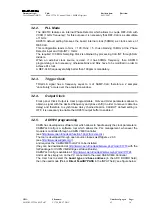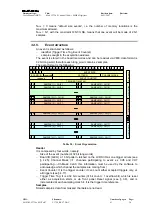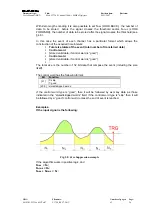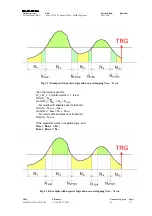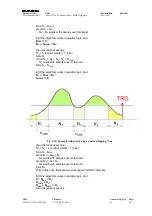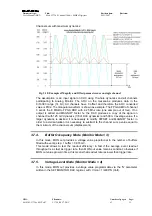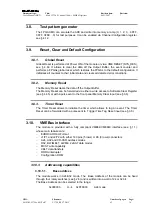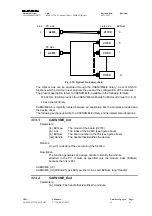
Document type:
Title:
Revision date:
Revision:
User's Manual (MUT)
Mod. V1724 8 Channel 14bit - 100MS/s Digitizer
06/11/2007
7
NPO:
Filename:
Number of pages:
Page:
00103/05:V1724x.MUTx/07 V1724_REV7.DOC
63
28
then the readout event is:
N'
1
+ N'
3
+ N'
5
+ 5 (control words) + 1 (size)
Good N'
1
= N
1
+ N
LFWD
... N'
1
words with samples under threshold
Skip N
2
- N
LFWD
- N
LBK
Good N'
3
= N
LBK
+ N
3
+ N
LFWD
... N'
3
words with samples under threshold
Skip N
4
- N
LFWD
- N
LBK
Good N'
5
= N
LBK
+ N
5
... N'
5
words with samples under threshold
In some cases the number of data to be discarded can be smaller than
N
LBK
and
N
LFWD
:
1)
If the algorithm works in positive logic, and
N
1
≤
N
LBK
< N
3
;
N
LFWD
= 0
;
Fig. 3.11: Example with positive logic and non overlapping N
LBK
then the readout event is:
N
1
+N
2
+ N'
4
+ 5 (control words) + 1 (size)
Good N
1
+ N
2
... N
1
+ N
2
words with samples over threshold
Skip N
3
- N
LBK
Good N'
4
= N
LBK
+ N
4
... N'
4
words with samples over threshold
Skip N
5
2)
If the algorithm works in positive logic, and
N
LBK
= 0
;
N
5
≤
N
LFWD
< N
3
;
then the readout event is:
N'
2
+ N
4
+N
5
+ 5 (control words) + 1 (size)
Skip N
1
Good N'
2
= N
2
+ N
LFWD
... N'
2
words with samples over threshold





